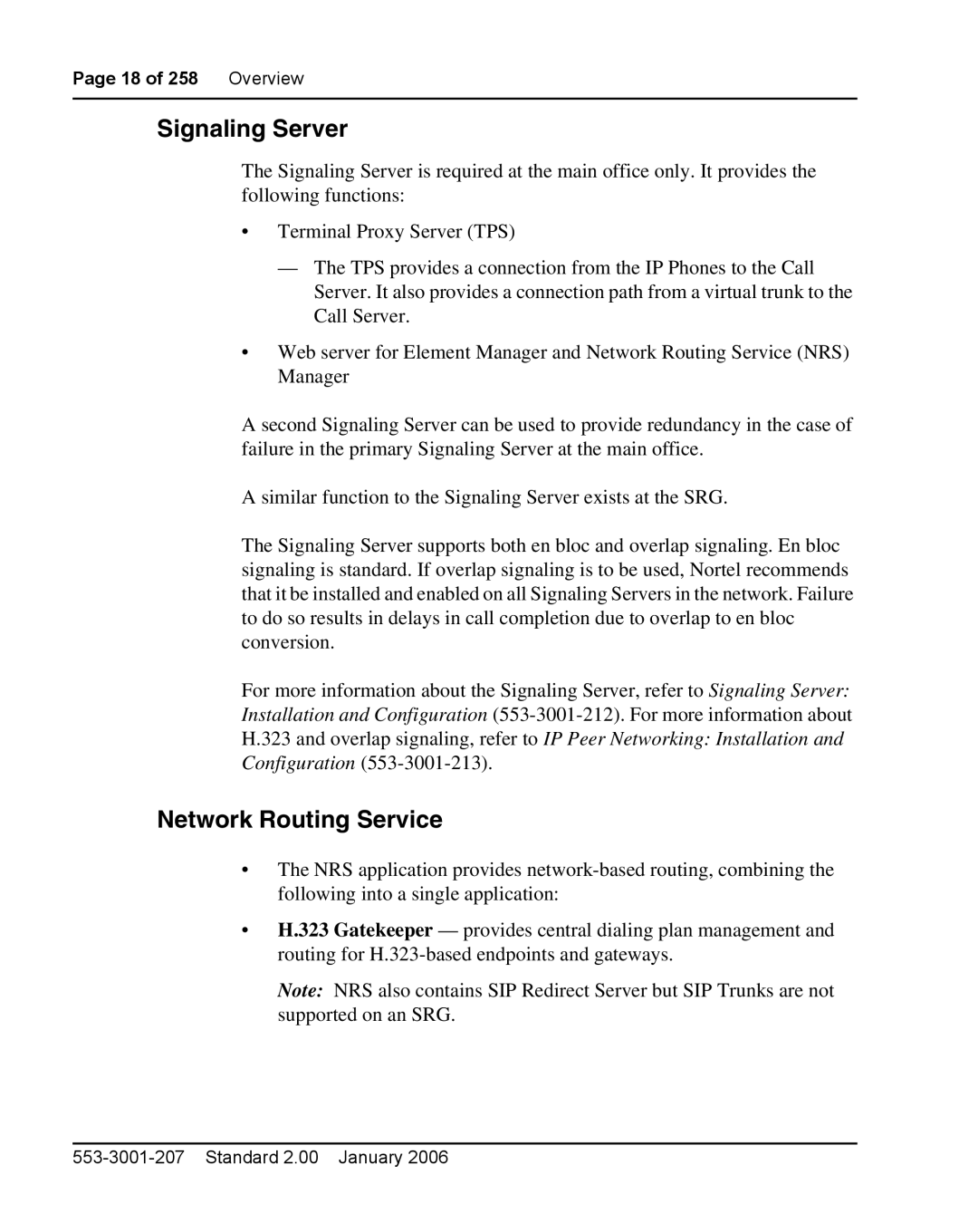
Page 18 of 258 Overview
Signaling Server
The Signaling Server is required at the main office only. It provides the following functions:
•Terminal Proxy Server (TPS)
—The TPS provides a connection from the IP Phones to the Call Server. It also provides a connection path from a virtual trunk to the Call Server.
•Web server for Element Manager and Network Routing Service (NRS) Manager
A second Signaling Server can be used to provide redundancy in the case of failure in the primary Signaling Server at the main office.
A similar function to the Signaling Server exists at the SRG.
The Signaling Server supports both en bloc and overlap signaling. En bloc signaling is standard. If overlap signaling is to be used, Nortel recommends that it be installed and enabled on all Signaling Servers in the network. Failure to do so results in delays in call completion due to overlap to en bloc conversion.
For more information about the Signaling Server, refer to Signaling Server: Installation and Configuration
Network Routing Service
•The NRS application provides
•H.323 Gatekeeper — provides central dialing plan management and routing for
Note: NRS also contains SIP Redirect Server but SIP Trunks are not supported on an SRG.
